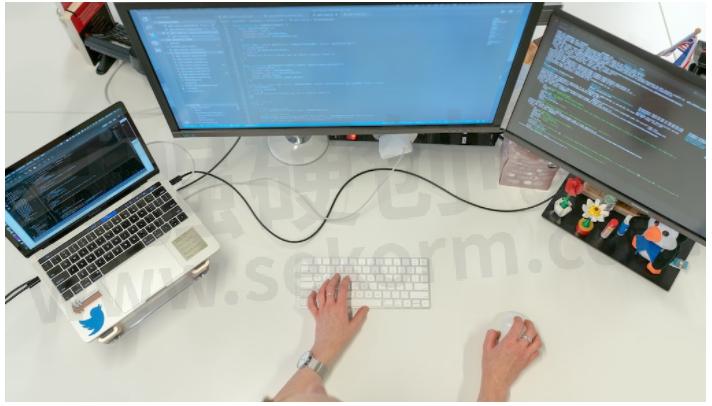How to Develope on Azure RTOS? Top-5 Hardware Considerations for Reliable IoT Devices
Azure RTOS enables resource-constrained devices to connect to Microsoft's Azure IoT, one of the leading IoT ecosystems globally. Azure RTOS is renowned for providing an ideal software development platform for enterprise-grade applications such as avionics, medical devices, transportation, and industrial control. However, your Azure RTOS device is only as reliable as the hardware running it. This post explains the top five hardware considerations for developing reliable Azure RTOS devices.

What's Azure RTOS?
Azure RTOS is Microsoft's real-time operating system and embedded software development suite for resource-constrained IoT devices. It is used to wirelessly connect smart devices in the global Azure IoT ecosystem for various enterprise applications.
Azure RTOS is built around the modernized generations of the ThreadX real-time kernel, historically one of the world's most used real-time kernels. The NetX Duo TCP/IP stack provides networking functions in Azure RTOS. It is optimized for constrained compute environments and supports IPSec and D/TLS to enable energy-efficient and secure IoT applications.
Unlike Windows IoT and Azure Sphere OS, which have high memory and processing requirements, Azure RTOS is optimized for resource-constrained hardware such as Cortex-M-class.
Why Azure RTOS?
Why choose Azure RTOS out of all the world's many real-time operating systems? Firstly, Azure RTOS is the go-to operating system and embedded software development platform for resource-constrained devices in Microsoft's Azure IoT ecosystem. Secondly, Azure RTOS is an ideal platform for various enterprise-grade and safety-critical applications – these include avionics, medical devices, transportation, industrial control, and more. It provides developers with a thoroughly tested, highly efficient, and reliable foundation for their IoT designs. The code has been certified to meet stringent industry safety and security standards, including IEC 61508, IEC 62304, ISO 26262, and EN 50128.
Azure RTOS Benefits for Developers
Azure RTOS provides developers with a reliable and proven real-time operating system and embedded software platform. Tested and certified code can improve quality and reliability and reduce the time needed for troubleshooting and debugging, minimizing development costs and time-to-market.
Top-Five Hardware Considerations for Developing Reliable Azure RTOS Devices
Embedded IoT devices are tightly integrated systems built out of software, firmware, and hardware. However, you can develop a reliable Azure RTOS device only by considering the whole package. Therefore, wireless hardware and MCU are crucial components in your product's overall reliability and performance.
Here's a rundown of the top five considerations when choosing hardware for your Azure RTOS device:
1. Wireless Performance
Wireless performance is critical in many Azure IoT applications. Wirelessly connected enterprise and industrial assets carry valuable, time-critical data. On the other hand, the devices are often located in noisy RF environments. Imagine the level of interference an industrial rotating machine imposes on a wireless IoT vibration sensor attached to it!
When choosing hardware for an Azure RTOS device, look out for wireless chips with high transmission power and receiver sensitivity to ensure reliable performance. With Silicon Labs, you can reach transmission power of up to +20 dBm on-chip while scoring industry-leading sensitivity levels.
2. Power Consumption
When your Azure RTOS devices operate without line power, energy-efficient hardware is critical to reducing lifecycle costs via less frequent battery replacements, especially in remote areas. With Silicon Labs' ultra-low-power System on Chip (SoC) design and low duty cycle optimization, you can enable battery-powered Azure RTOS devices with tens of years of operational life.
3. Security
The Azure IoT platform features robust in-built security features such as IPSec, TLS, and DTLS. However, your Azure RTOS is only as secure as its weakest link. When choosing hardware, ensure proper support for security – such as the secure link interface on Silicon Labs WF200 Wi-Fi module, which has the ability to encrypt communication with the host processor.
4. IoT Protocols
Wi-Fi is the predominant connectivity protocol on Azure IoT, and most hardware running Azure RTOS supports Wi-Fi. While Wi-Fi is a universal wireless technology in the enterprise space, some IoT use-cases are better addressed with more energy-efficient wireless IoT protocols. With Silicon Labs' EFR32MG12, you can develop your Azure RTOS application on a device suited for implementing a wide range of wireless IoT protocols, including Bluetooth Low Energy, Zigbee, Proprietary, and more.
5. Cost and Time-to-Market
Developing IoT devices is budget and time-sensitive. You must minimize development costs and time-to-market. Your hardware choice has a significant impact on this equation. With Silicon Labs' high-quality, pre-certified, and standards-compliant SoCs and modules, you can significantly cut down on costs and time needed for testing and certifications.
- +1 Like
- Add to Favorites
Recommend
- Unlocking Wireless Home Security Capabilities with Wyze Lock Bolt smart door lock that is based on Silicon Labs’EFR32MG21 2.4GHz Wireless SoC
- Silicon Labs Multiprotocol Wireless SoCs EFR32MG24 Team up with Wirepas to Expand Industrial Mesh Network Solutions
- Wirepas Mesh 2.4GHz Firmware v5.4 and Silicon Labs EFR32MG24: A Powerful Combination for IoT Applications
- Silicon Labs Simplifies IoT Development with Simplicity Studio 5
- Wirepas and the Silicon Labs’ EFR32FG23 Sub-GHz SoC are taking on India’s Smart Metering Challenge
- Silicon Labs Strengthens Isolated Gate Driver Portfolio
- Introducing the EFM8BB50: A New Addition to SILICON LABS 8-bit MCU Family
- Software Speeds Development of IEEE 1588 System Integration | Silicon Labs
This document is provided by Sekorm Platform for VIP exclusive service. The copyright is owned by Sekorm. Without authorization, any medias, websites or individual are not allowed to reprint. When authorizing the reprint, the link of www.sekorm.com must be indicated.






























































































































































































































































































































































































































































































































































































































































































































































































































































































